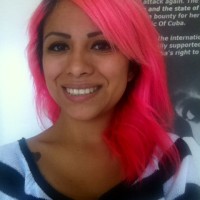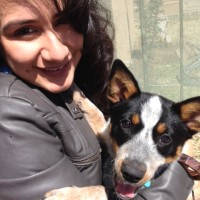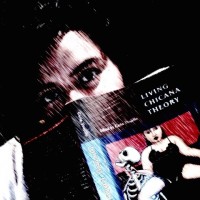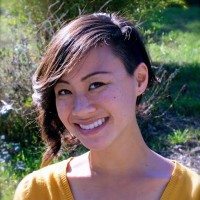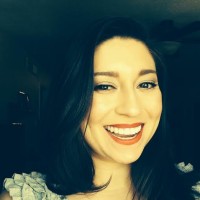Inventing Ourselves: Summer Blog Series
Greetings, readers! The Third Woman Press 3 Collective is kicking off a summer blog series that highlights all of the amazing people contributing to our TWP revitalization movement! This week, we begin with the six core collective members: Audrey, Brenda, Daniela, Kim, Mariana, and Sara.
Q. What’s your geographical location?
Audrey: Los Angeles has been home to me since I can remember.
Brenda: I was born and raised on the Southside of Chicago (Little Village, to be exact). Since college, I’ve lived across the Southwest. Currently I’m living in Albuquerque, New Mexico.
Daniela: I was born and raised in North Orange County, California (NOT the Orange County you’ve seen on T.V.) but have done stints in L.A., the Bay Area, Arizona, Indiana, Mexico, and Italy. I feel happiest and most at home when I’m outside of the U.S.
Kim: I was born and raised in San Jose, California. I’ve lived all over the state but right now I call the East Bay home.
Mariana: I am living in Los Angeles, California.
Sara: I was born and raised in Dallas, Texas, and I escaped when I was 18! I’ve been moving around since then, but I’ve felt most at home where I am now: San Antonio, Tejas.
Q. What keeps you busy (day job/ projects/ other responsibilities) besides Third Woman Press?
Audrey: I am in the process of completing my MA in Chican@ Studies at California State University Northridge. (I bring the @ to the program). I am also a research assistant to Dr. Maylei Blackwell (UCLA) and because the struggle is real, I also work as a graduate assistant at CSUN in the department of Student Outreach and Recruitment Services.
Brenda: I work as a labor organizer by day and a occupational health enthusiast by night. Fighting for fair working conditions and healthy workplaces is at the core of my feminism. I strongly believe if we want to live is a feminist society, it has to start with empowering the poor working class.
Daniela: I’ve been in school for 21 years of my life and just committed to 4-5 more. Quids in! Ima read. Ima read. Ima read.
Kim: I’m a graduate student at UC Berkeley in the Ethnic and Gender Studies programs. I also do community work with Asian Immigrant Women Advocates, and I teach media literacy to young women through a San Francisco based program called About-Face. The most important activity I do everyday is teach and learn from young people in community.
Mariana: When I’m not at my day job or working on things for Third Woman Press, I am working on creative film projects.
Sara: I’m a PhD candidate at UC Berkeley in Ethnic Studies, and I’m writing my dissertation. (Yay?) I’m also adjunct faculty at UT San Antonio in the Women’s Studies program. I teach feminism and globalization, feminist research methodologies, and feminist theory.
Q. What do you do with your free time?
Audrey: I am also a contributing editor for The Feminist Wire, mentor for Immediate Justice, and part of the Ad-Hoc Committee on Institutional Violence for Mujeres Activas en Letras Y Cambio Social (MALCS). I also binge watch on Netflix, cuddle with my partner, and I’m trying to balance this all with getting into working out.
Brenda: I enjoy spending time with my puppy. We go out for walks all the time, and she keeps me grounded.
Daniela: When I have free time, I like to: read fiction, autobiographies, and biographies for inspiration; keep up with different musical artists and genres; catch up on movies and television shows; and explore the politics of ghosts and ghost hunting.
Kim: I live in the Bay Area, so like a lot of people out here I enjoy cooking and eating in my free time. I love food! I like trying new (cheap!) restaurants and recipes. Right now I’m obsessed with finding and eating kouign-amann, which are basically what would happen if a croissant and a baguette had a magical baby that they slathered in butter and sugar.
Mariana: Reading graphic novels, or catching up on my movie list. I love science fiction, pulp, schlock, and basically anything that involves crazy awesome visuals.
Sara: Free time? I use my mind all day and that’s so exhausting! I try to take care of my emotional, physical, and spiritual self through meditation and yoga. I also use my down time to relax and watch TV with my partner and our little dog, Ixta.
Q. What brought you to Third Woman Press?
Audrey: Because Sara and Alarcón believed it was possible. I remember when I first was researching Chicana feminisms in the library as an undergrad and one of the first books that I came across was Chicana Lesbians: The Girls Our Mothers Warned Us About. The essays in that book changed my life because up until that point I was pretty unaware of the many lesbian/queer women of color writers, besides Gloria Anzaldúa and the few feminist writers that get tokenized. Reflecting upon this transformative moment and the feelings I felt when I read words that expressed exactly how I felt changed me. Once Sara mentioned that she was going to revitalize the Press, I was on board. I want to help however I can to ensure that we honor those that paved the way and continue the work “para que nunca mas nos vuelvan a borrar.”
Brenda: Sara. Just kidding. I remember the first time I read a Chicano book. I must have been like 8 years old when my mom took my brother and me to the Rudy Lozano Library in Pilsen in Chicago. I was really into baseball, and there was this book with the word baseball on the title. It was Baseball in April by Gary Soto. I remember we got home, and I started to read it. I was a very avid reader by that age, but for the first time I was reading a book that had Chicanos as primary characters. For the first time, I saw kids like me on the page. The stories completely broke my little heart, and parts of me were still missing. I came to Third Woman Press so that we can continue to see ourselves, not some Hollywood-stereotype version, on the page, on the TV, on YouTube, and any other multi-media format but also to create the avenues through which people of color, especially youth, can tell their stories and begin weaving common threads.
Daniela: I found out about Third Woman Press when I was an undergraduate and was disappointed to hear that it was not around anymore because I believed its publications were strongly needed. At the time, I did not know why TWP was inactive or how one would go about to bring it back or create a new press. I had previously worked with Sara on a departmental event, and when I learned that she was trying to revitalize TWP, I told her to contact me if she needed any help. I believe in the work that presses like TWP carry out and want to contribute to TWP’s sustainability so that other people can have the opportunity to connect with TWP books the way I did.
Kim: I was attracted to Third Woman Press because the work we do makes important art, personal narratives, and scholarship available. I remember what it felt like to be marginalized and alone, thinking no one in the world knew what it felt like to survive racism, violence, and sexism—to be a queer feminist of color. Then the instructor of my first Women’s Studies class assigned some of Third Woman Press’ publications and in those pages I found people who shared my experience and gave me a language with which to describe it. Reading those words for the first time, I felt validated and whole and like part of an important community.
Mariana: My love of media and desire to read see new stories by women of color with women of color as the protagonists. It’s a little selfish, really.
Sara: Third Woman Press 3 grew out of my deep sense indebtedness to women of color thinkers, writers, and artists who helped change the path of my life through their activism. One of the women at the top of that list is Norma Alarcón, founder of TWP. I learned from her that the first incarnation of Third Woman Press had to shut down in 2004 because of lack of funds and energy. I kept wondering if anyone would ever bring it back because the feminists of color of my generation really need a publishing movement for us and by us and near us. One day, I gave myself permission to recognize that I had the resources, the support, and just the right amount of ganas to step up to the challenge, so I asked Norma if I could begin to organize a TWP revitalization project. She said yes, and here we are!
Q. Out of all the Third Woman Press books printed, which is your favorite and why?
Audrey: Chicana Lesbians! I love the essays, the writers, the cover. But I also love Living Chicana Theory—so maybe both. I’m ambitious like that!
Brenda: Chicana Lesbians: The Girls Our Mothers Warned Us About. In my opinion, this is the first anthology that really questioned not only sexuality of chicanas, but also gender expression. One of my favorite articles is Ana Castillo’s “La Macha: Toward a Beautiful Whole Self.” If you haven’t read it, you should!
Daniela: My favorite TWP book is the one I was first introduced to: Living Chicana Theory edited by the awesome Carla Trujillo. I love the beautiful cover art by Maya González and many of the pieces, especially Teresa Córdova’s “Power and Knowledge: Colonialism in the Academy,” resonated with me during that period of my life.
Kim: My favorite piece Third Woman Press has published is Mitsuye Yamada’s essay, “Invisibility is an Unnatural Disaster: Reflections of an Asian American Woman.” In it, Yamada describes the phenomenon many Asian American women endure of not being entitled our bodies as complex spaces of race, gender and class oppression. It’s very familiar to me as a Vietnamese American woman and feminist.
Mariana: I am a fan of Variaciones Sobre Una Tempestad/Variations on a Storm. I really enjoy the poetry. That and the cover is cool.
Sara: Ah! This is a hard question. I have lots of favorites, but for today, my favorite is Chicana Lesbians: The Girls Our Mothers Warned Us About because 1) the banned cover with Ester Hernández’s La Ofrenda is gorgeous; 2) I love handling the physical copies of the book and saying, for example, “I just found two more Chicana Lesbians!”; 3) it includes lots of my favorite writers and thinkers like Gloria Anzaldúa, Ana Castillo, Terri de la Peña, Cherríe Moraga, Monica Palacios, Emma Pérez, Carla Trujillo, and Yvonne Yarbro-Bejarano; 4) it’s an unapologetic anthology that allows Chicana lesbians and queers to see themselves reflected in writing.
Q. What book do you wish you would have written?
Audrey: I would also have like to have written something like Sex and the City so that the writing could reflect my experiences and those of the people who surround me. I love that so much emphasis was on fashion and issues that women experienced, but if I had written it, I would have presented those issues through a queer of color lens.
Brenda: Not a book necessarily. I would have written,”Speaking In Tongues: A Letter To 3rd World Women Writers” by Gloria Anzaldúa.
Daniela: This is a difficult question and all of my possible answers are book series I enjoyed when I was younger. My first choice would be Goosebumps and Fear Street by R.L. Stine. I’ve always been intrigued by the supernatural but my parents did not really allow me to watch horror films when I was younger (I did manage to sneak in episodes of Are You Afraid of the Dark? here and there). However, when it came to books, they did not pay much attention to the specific titles I read so Goosebumps and Fear Street was the subversive way I would get my horror fix and use my imagination for the visuals. Although I never related to any of the stories or characters, I enjoyed reading them because they were “scary” and dealt with dark themes—even if some of the scenarios were pretty far-fetched.
Harry Potter came in at a close second. I’m still waiting for my Hogwarts letter.
Kim: Honestly, I don’t think I would want to have written any of the past books TWP published because then I wouldn’t have gotten to read them! But if I could go back in time, I would have loved to be involved with editing Writing Self, Writing Nation.
Mariana: I would have loved to have written The Babysitters Club (BSC) series by Ann M. Martin. I was addicted to them when I was in elementary school and would ransack the book bins at the Goodwill looking for them. Looking at the series now, I can see that they are trashy, pulpy, problematic and very 90s. Only two members of the ensemble were WOC, but I am thankful that I had them. Those books were probably my very first exposure to any women of color protagonists in paperback chapter books. I think I related most to Claudia Kishi because she was a badass creative WOC, and I loved that the BSC stories always centered around the power of friendship among a group of teenage girls, which is really cool.
Sara: I wish I would have written Gloria Anzaldúa’s Borderlands/La Frontera: The New Mestiza, but it feels weird to say that. What I really mean is that I wish I had been able to give meaning to my experience—as a daughter of Mexican immigrant parents living in Texas—before reading Borderlands.
Q. Feminism and feminists are complex. As a self- identified feminist, what do you do that might surprise people who believe in a narrow idea of what feminists do on a daily basis? #stillafeminist
Audrey: I have a close relationship to my dad and I am often called a “daddy’s girl.” Stereotypes about a “daddy’s girl” are often very problematic as it presumes that it reinforces a patriarchal relationship between a father and daughter. However, my dad has always been supportive of my activism, academic goals, and politics. We have long conversations about life, and he wants me to be happy and will always support me however he can.
Brenda: I love sci-fi. Even really cheesy sci-fi, with really problematic female and POC roles. But I will say, there are some amazing gems, Octavia Butler holds it down, and this just means we gotta write ourselves in. #stillafeminist
Daniela: I’m a fan of pop culture even though not all pop culture is necessarily “good” or “conscious.” I am particularly intrigued by the Kardashian sisters and how they have been able to market and brand themselves so successfully, and [presumably] maintain control over their public figure personas via their “reality” show and merchandise. It is an elaborate performance art piece that I just can’t keep away from—so I “keep up” instead. #KIMYEforever #stillafeminist
Kim: I love this question because it acknowledges how diverse and complex feminists are as a group of people. In the spirit of honesty, I have to say I love listening to mainstream hip-hop. Anyone with an “eezy” at the end of their name, like Young Jeezy or Weezy (and yes, I know that’s Lil Wayne)! #stillafeminist
Mariana: I am addicted to fashion blogs. (I blame Claudia Kishi.) It’s great to be able to take control of how you visually present yourself. I really have wayy too much make-up and more accessories than anyone will ever know. I’m a homebody, so my fashion experiments mostly just amount to me playing dress up and taking selfies around the house, which is awesome. #stillafeminist
Sara: I love lipstick and eyeliner and tight jeans, and I feel good when I wear ’em. I will not apologize for what my momma gave me. #stillafeminist
Next week, we’ll shine the spotlight on one of the amazing fundraising leaders whose dedication and support keeps us going strong. Stay tuned to find out more about this special person!

